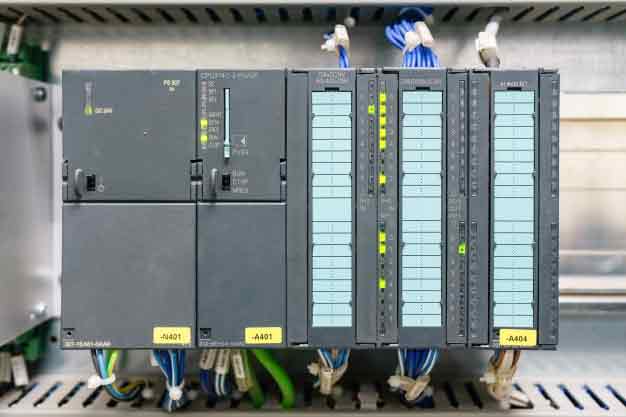Arves Stolpe, an engineer for National Instruments, writes in EE Times that choosing the right platform is a “challenge that every design engineer faces.” Stolpe compare PLCs and PCs, but for industrial floor applications, its best to stick with PLCs due to the ease of application and processing. Also, updates to a PLC may be done on the fly and not be hindered by Windows and other PC issues. This article will highlight some of the top things to consider when choosing a PLC platform for an industrial automation system.

What Can the PLC Do?
When purchasing a PLC, its good to consider what it can do. Allen Bradley has programmable controllers that have increased processing times, storage options, and expansion options. Some PLCs are built on small chassis frames that are not adaptable for expansion. Other PLCs have memory issues and may not allow storage for holding data until the distributed control system reads it and relays it to a database. Go here to find out more about automation right now.
Honeywell has been traditionally adaptable in the heating and air conditioning industry. Siemens controls can be found in transportation and rail. Omron has been building sensors and PLCs for the industrial world since 1933. PLCs have many shapes, sizes and functions. Understanding each brand of platform will help adapt it to your industrial application.
What Does the PLC Need to Do?
With that in mind, an engineer must consider what the PLC needs to do. How many analog inputs will there be? How many digital inputs? Does it need to be adaptable for Ethernet, or wireless protocols. Is the software to program it already in house or is there more licenses to be bought?
What Are the System Requirements?
In general, Stolpe lists a few areas to look at when choosing a platform. These areas are as follows:
- Ruggedness
- Reliability
- Cost
- Software
- Support
Ruggedness refers to how the PLC will be able to maintain in its environment. Reliability is how dependable it will be. This is also related to maintainability and an engineer must ask; “how easy will it be to train technicians to maintain this?” Cost is variable between vendors. One thing to think about when considering cost is that some brands are more expensive but do not include support in the cost of the unit. Other vendors, such as Automation Direct have free support. Cost will also increase if PLC software has to be purchased. If everything else in the plant is Allen Bradley, then building a line with Omron components may not be justifiable.
Interfacing with PLCs is another issue that must be considered. This will have its own cost attached to the system. Some modern PLCs have adapted to using USB ports. This makes attaching human machine interfaces (HMI) easy, but its only one thing to consider. Regardless of interfaces, the design engineer must think about ruggedness, reliability, cost, software, and support when including PLCs in industrial automation systems.
